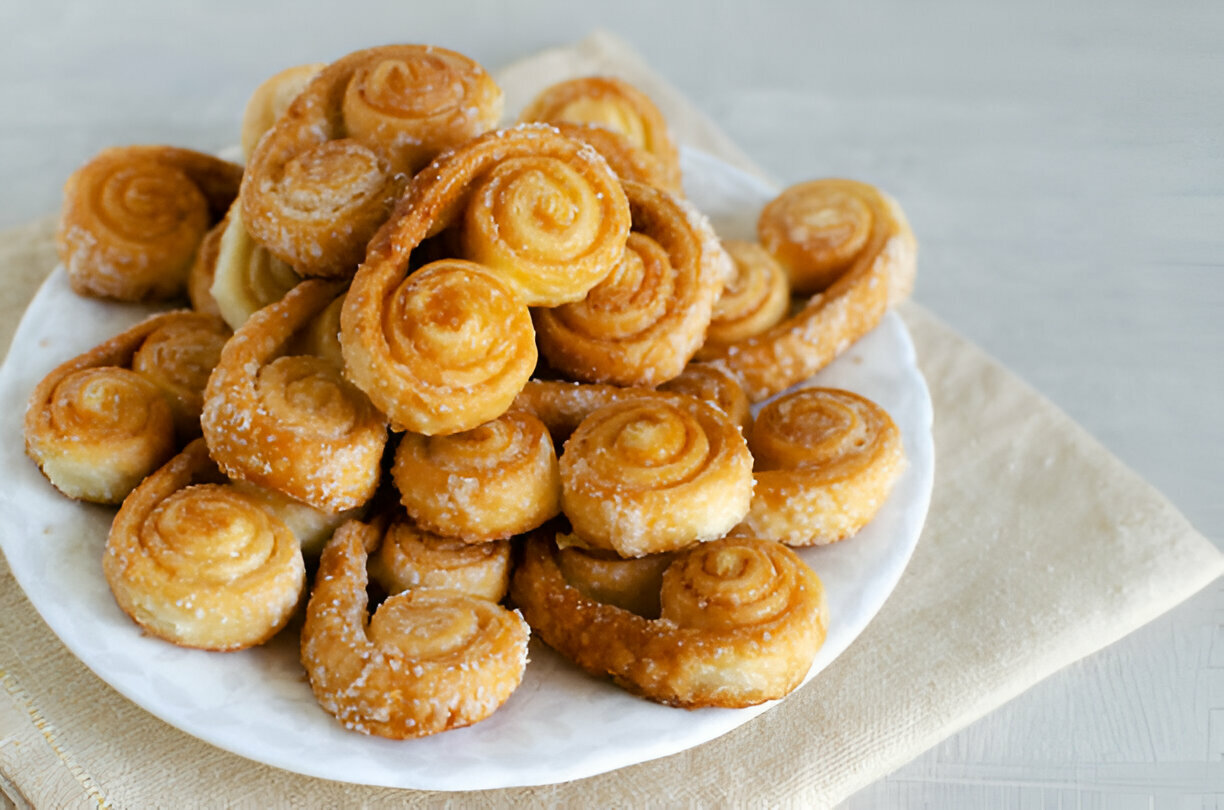
Puff Pastry Cookies Recipe
Buttery, crisp, and kissed with caramelized sugar, these puff pastry cookies are the perfect sweet treat that looks impressive but couldn't be simpler to make.
Pin
Print
Save
Servings: 24 cookies
Calories: 100kcal
Ingredients
- 2 cups granulated sugar
- 8 ounces frozen puff pastry typically 2 sheets per package
- Cinnamon sugar optional
- Vanilla or chocolate glaze optional
Instructions
- Allow the puff pastry to thaw until it becomes pliable but remains cold to the touch. If it becomes overly soft or sticky, return it to the refrigerator briefly. Ideally, the pastry should be about 1/8 inch thick; if it’s thicker, gently roll it out to reach the proper thickness. Should any cracks appear, moisten your finger with a little water and smooth the pastry back together.
- Preheat your oven to 400°F (200°C). Line your baking sheets with parchment paper or sections cut from brown paper bags for a rustic touch.
- Scatter granulated sugar generously over your countertop, treating it as you would flour when rolling out dough. Place one sheet of puff pastry onto the sugared surface, and sprinkle the top with an even layer of sugar as well.
- Working with gentle hands, fold the two longer sides of the pastry inward toward the center, pressing lightly to secure. Repeat by folding the edges inward once again so they meet at the centerline. Finally, fold one side over the other as if closing a book, forming a compact U-shape.
- Using a sharp knife, slice the folded pastry crosswise into pieces about 3/8 inch thick. Arrange the slices flat onto the prepared baking sheet, leaving space between each piece. Lightly dust the tops with additional sugar.
- Bake for 6 to 7 minutes, until the bottoms are caramelized and beginning to puff. Meanwhile, prepare the second sheet of pastry following the same method.
- Remove the cookies from the oven, flip each one carefully, sprinkle the reverse side with a little more sugar, and return to the oven. Bake for another 3–5 minutes, or until the edges are golden and the centers are cooked through.
- Once baked, transfer the cookies to wire racks to cool completely. When cooled, store them in an airtight container to maintain their crispness.
- Optional variations: substitute cinnamon sugar for a warm, spiced flavor or drizzle with vanilla or chocolate glaze once cooled for an extra touch of sweetness.
Nutrition
Calories: 100kcal
Did you make this recipe?Want more delicious recipes like this? Follow us on Pinterest for daily inspiration! Click here to Follow me on Pinterest @feaztcom